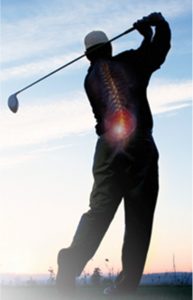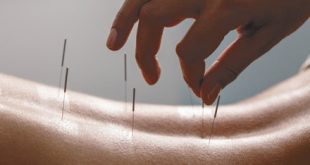By Shane Smith, PT, DPT


So what is the answer? Do we accept the aging process and stop playing all together, or do we try and make a change to allow for continued golf activity throughout retirement years? My opinion is lifestyle modifications. Many patients that play golf have or will experience some back pain associated with playing the game of golf. This back pain felt while playing at times is normal, and it can be improved or completely eliminated with proper body care and management.
A few questions to ask yourself if you are a golfer experiencing back pain are as followed:
1) do you stretch before and after golf or exercise?
This is one of the most common issues I come across with my golfing patients. This type of warmup routine allows the body time to loosen up and prepare for all different motions that may occur during activity such as golf without too much force. Gary Player, a hall of fame professional golfer, was the first to bring to light in the 1980’s about the importance of pre-golf 10 minute stretching warmup routine. He swore by the importance of this warmup, and also attributed it to his longevity in the game. As we age elastic properties of our muscles and soft tissues diminish, thus resulting in a greater likelihood for muscle or soft tissue tears.
Because of this change occurs to tissue with age it becomes immensely important to stretch before exercise and after exercise to prevent tears from occurring.
2) Are there any activities that you perform on a regular basis other than golf?
There is a principle our bodies function on called the “SAID’ principle, which stand for: Specific Adaptations to Imposed Demands”. This principle states that if all you do is walk and swing a golf club that is all your body will be trained to do. If you try to lift or carry something around the home or in the community thinking your body can handle it because you can still play 18 holes of golf, you would be wrong.
If you do not lift weights or strengthen your body in other ways you will not have adequate total body strength, and thus are set up for future injury.
3) When you’re not golfing what are you doing with your time?
The reason I ask this question is to determine what are patients that have spinal problems doing when they are not golfing. Most response is they are doing sitting related tasks such as working on the computer, watching television, or reading a book. All these positions require a forward flexed spine. Over time sitting in a flexed posture will result in breakdown to the vertebral body of the spine and also set up further muscle imbalances and tightness.
The muscle groups that are most affected with prolonged siting are tight and stressed. These muscles have a direct attachment on those important bony structures and thus can impact the alignment with the rest of the skeletal system. Tight muscles are usually weak muscles consisting of your glutes and deep abdominal musculature. When this cross pattern muscle tightness and weakness occurs. Your spine is set up for disaster, and thus needs to be corrected to minimize the continued degeneration of the spine. The image below depicts this tightness/weakness problem that occurs in our low back with too much sitting time in the improper position.
An effective Physical Therapy evaluation of your musculoskeletal problems will be paramount in correcting issues to allow you to get back to the game you love in a timely manner. If you have ever wondered “should I be doing this activity or am I making my condition worse?” Your Physical Therapist is the one to help you decide whether your physical activity is beneficial or harmful, also there may be modifications to current exercise that will allow it to be more comfortable and enjoyable. I hope this post is helpful for addressing some of the most common issues I see with active golfing patients.
NAPLES PREMIER PHYSICAL THERAPY
681 Goodlette-frank Rd unit 230
Naples, FL 34102
(239) 595-7833
www.NaplesPremierPT.com
References
1) Lindsay D, Horton J. Comparison of spine motion in elite golfers with and without low back
pain. J Sports science. 2002;20:599-605.
2) McCarroll JR, Gioe TJ. Professional golfers and the price they pay. Physician sportsmen.
1982;10:64-70.
3) Batt ME. Golfing injuries: an overview. Sports med. 1993;16:64-71.
4) Batt ME. A survey of golf injuries in amateur golfers. Br J Sports Med. 1992;26:63-65.
 Southwest Florida's Health and Wellness Magazine Health and Wellness Articles
Southwest Florida's Health and Wellness Magazine Health and Wellness Articles

